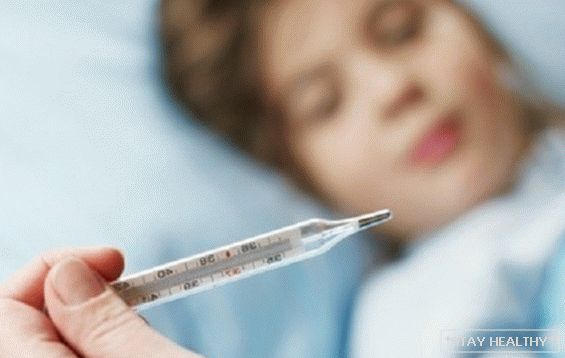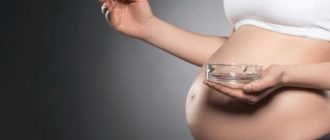 Чт, 01 июн 2017 Автор: врач терапевт Елена
Чт, 01 июн 2017 Автор: врач терапевт ЕленаKornilov
Enterovirus infection is more common in children than in children.
adults. All children’s age groups are affected, but in children up to 1
year is harder. Polymorphic disease – characterized by
multiple clinical symptoms, various organs are affected and
system. Antiviral therapy is not prescribed, treatment
syndromic, depending on which systems are involved in
pathological process. The outcome is favorable.
Contents
Causative agent of infection
Enterovirus infection is a disease with one pathogen and
similar pathogenesis (developmental mechanism), but with different
clinical manifestations.
The causative agent of the disease are viruses of the Enterovirus family.
These include RNA-containing viruses:
• polioviruses;
• ECHO;
• Koksaki;
• unclassifiable viruses.
Common everywhere. Highly resistant in the environment, in
feces remain viable up to 6 months, is characteristic
seasonality – summer – autumn period. Source – a sick person
or virus carrier. In the world, up to 46% of the population are asymptomatic.
carriers.
Transmission mechanism
The ways of transmission are varied:
• fecal – oral;
• household;
• airborne;
• vertical (from mother to fetus during childbirth);
• water (when bathing in dirty waters and watering plants
contaminated water).
Cases of virus transmission through water in coolers are described.
The susceptibility to viruses is very high, but after suffering
infection for several years remains immune.
The course and form of the disease
Entrance gate – respiratory mucosa and gastrointestinal
intestinal tract. Viruses actively multiply and spread by blood.
throughout the body, causing symptom polymorphism.
The hidden period is from 3 days to a week. When enterovirus infection
in children, symptoms begin with the manifestation of intoxication, acute
onset, high fever up to 400 С, further develops
several forms of the disease, occurring in isolation or
are combined:
• meningitis;
• sore throat;
• epidemic myalgia;
• heart damage.
Atypical forms:
• abdominal – intestinal damage;
• skin lesions – polymorphic rash;
• liver damage;
• eye pathology.
Clinical manifestations
Intoxication is manifested in children with enterovirus infection.
symptoms of severe weakness, lethargy, agonizing headaches,
dizziness, insomnia. Accompanying all forms
diseases.
Gastroenteric form and liver damage
Abdominal syndrome: diarrhea up to 10 times a day watery
nature of normal color without pathological impurities, flatulence,
abdominal pain, most often in the right abdomen, reduced
appetite or lack thereof, nausea, vomiting. Appearance of loose stools
may be accompanied by fever, but may be at
normal temperature.
At an early age, acute gastroenteritis is combined with catarrhal
syndrome: runny nose, dry and rare cough, throat congestion.
In young children, the duration of the disease – up to 2 –
x weeks.
Liver damage is manifested by signs of enteroviral
hepatitis: the child turns yellow skin and mucous membranes of the mouth,
conjunctiva, severe itching of the skin, urine becomes dark,
feces discolored. On palpation of the abdomen is determined by the increase
liver, sometimes – and spleen.
In many cases, when children enterovirus infection symptoms
catarrhal phenomena come to the fore. Then the disease
resembles ARVI, but to subfebrile or moderate febrile (380
C) temperature with a runny nose, cough, manifestations of intoxication in
the form of headaches, weakness, sleep disorders, joins
gastroenteric syndrome with multiple abdominal pain
watery diarrhea, nausea, repeated vomiting.
Angina
On the background of enterovirus infection in children, symptoms of herpangina
являются основным проявлением diseases. When viewed on
hyperemic pharyngeal mucosa clearly visible
papules that are converted to vesicles. After 2 – 3 days on site
open vesicles form erosion. Accompanied rash
severe pain when swallowing, magnification and tenderness
the nearest lymph nodes, enhanced salivation.
Skin lesions
In any clinical forms of enterovirus infection in children
symptoms the disease is accompanied by a rash in the form of red spots and
small vesicles (vesicles) up to 1 – 3 mm in diameter pink.
Changes on the skin go away on their own in 2 – 3 days, leaving
peeling of the skin. Localization of the rash – the torso and face, less often –
limbs.
Meningeal form
Exanthema accompanies another form of enterovirus infection –
meningeal It proceeds in parallel with the symptoms of meningitis.
Enteroviral serous meningitis is manifested by the following
symptoms:
• photophobia;
• heightened sensitivity to sounds;
• positive meningeal signs (symptom Lassega:
excruciating headaches when casting chin to breasts
Kernig’s symptom: due to increased muscle tone – flexors
It is difficult to unbend a child’s bent leg, Brudzinsky’s symptom:
spontaneous flexion of the legs when touching the chin to the chest);
• severe weakness;
• apathy;
• temperature up to 400 С;
• cramps.
Further disorders of vision, consciousness,
muscle pain, increased tendon reflexes appear.
Eye pathology
Another form of pathology is eye damage:
• conjunctival hyperemia;
• pain or pain in the eyes;
• lacrimation;
• photophobia;
• swelling of the eyelids;
• serous or purulent discharge;
• in severe cases, there is bleeding in the conjunctiva
eyes.
A characteristic sign of eye damage is one-sidedness.
process, in 2 – 3 days the second eye is involved.
Heart pathology
When infection caused by enteroviruses develops congenital
myocarditis – this happens in the intrauterine (vertical)
infection. The child is not eating well, sluggish, adynamic. As
increases in heart failure are increasing clinical
manifestations:
• cyanosis of the lips and skin;
• tachycardia or other rhythm disturbances;
• severe shortness of breath;
• heart murmur.
The condition of the child is severe, immediate
treatment without timely treatment may be fatal.
Mialgia
Epidmyalgia is caused mainly by Coxsackie viruses,
characterized by severe muscle pain. Leaks
paroxysmal, the duration of the attack is different: from 30 seconds to
20 minutes, pain arises and disappears suddenly, intensifies with
movements, to predict the appearance of an attack is impossible. Mialgia
accompanied by:
• palpitations and breathing,
• tension and pain in the anterior abdominal wall;
• pallor and moisture of the skin.
Treatment
When enterovirus infection у детей лечение — патогенетическое и
symptomatic. Specific antiviral therapy in children is not
held.
The scope of therapeutic measures depends on the form and severity.
diseases. With damage to the liver and intestinal form of enterovirus
infection in children is treatment:
• dehydration and detoxification (inside – Regidron, various
salt solutions, just saline or saline,
cooked at home),
• in the use of sorbents (Smekta, Enterosgel, Polysorb, etc.),
hepatoprotectors, antispasmodics (But – shpa).
For meningeal enterovirus infection in children, treatment
complex, held:
• dehydration using Mannit;
• hormone therapy – in severe cases (Dexazone, etc.);
• measures to improve microcirculation (pentoxifylline
/ Trental /);
• improvement of cerebral circulation (vinpocetine
/ Cavinton /).
Myalgia is treated symptomatically.
painkillers (NSAIDs – Ketorol, Nimesulide, etc.).
Damage to the eyes – conjunctivitis – are treated by the use of:
• antiviral preparations (eye drops – Ophthalmoferon,
Poludan and others.);
• at accession of a bacterial infection when it appears
purulent discharge, antibiotics are used (Tobrex, Uniflox and
other);
• desensitization therapy (Zodak, Zyrtec).
Treatment эндокардитов, миокардитов, перикардитов направлено на
detoxification and restoration of cardiac activity.
The skin form, in general, does not require special treatment, with
time, all manifestations regress independently.
In the case of microbial complication, antibacterial treatment is used.
therapy.
For any form of enterovirus infection in children, treatment
prescribed exclusively by a doctor – self-medication is dangerous due to
тяжести diseases. In severe cases, the child is hospitalized. On
the entire period of treatment is prescribed bed rest, a strict diet.
Prevention is personal hygiene.






